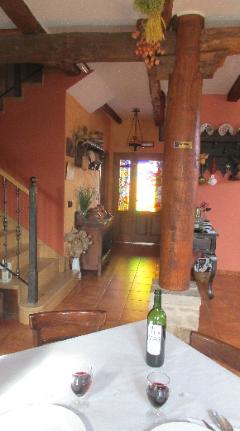
Where We Be
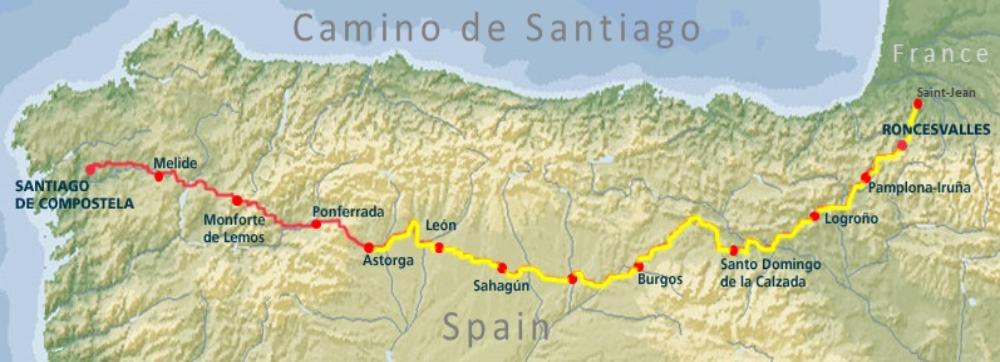
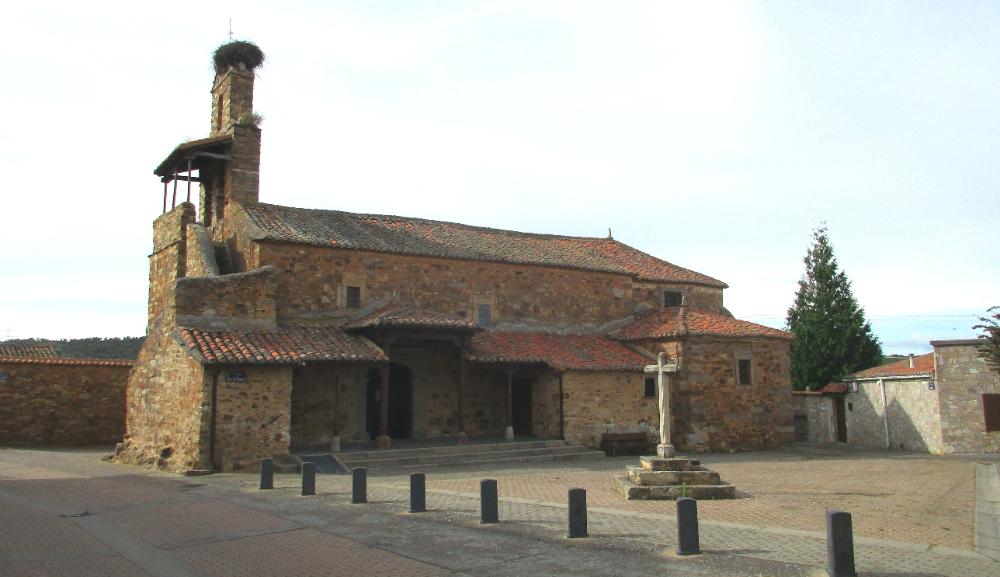
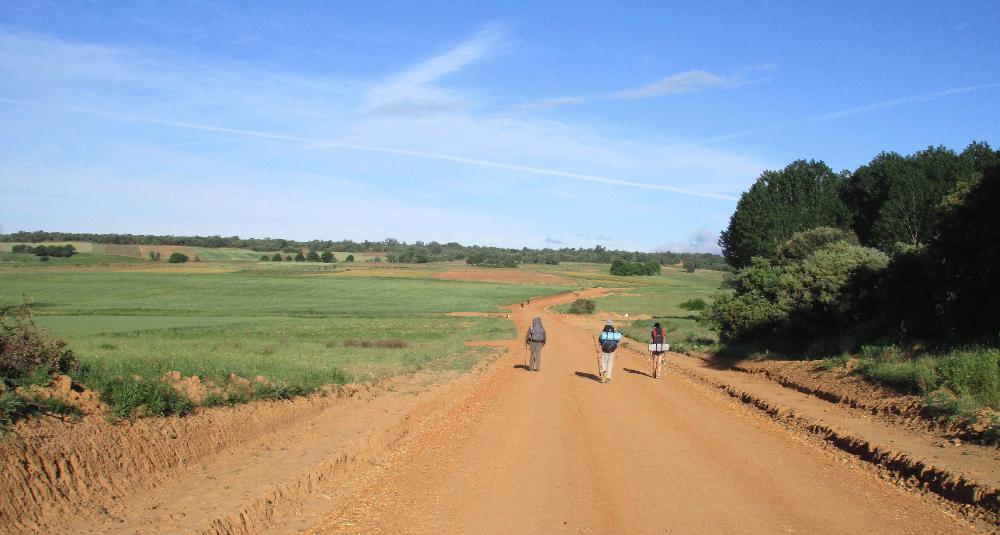
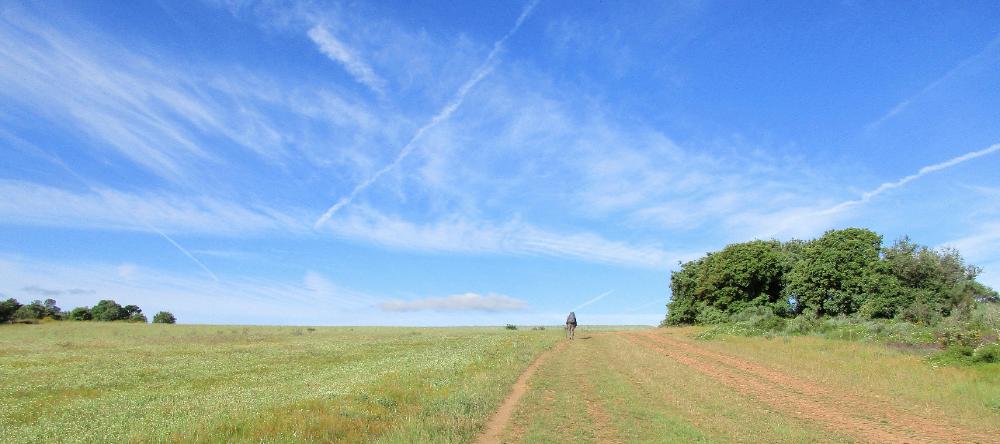
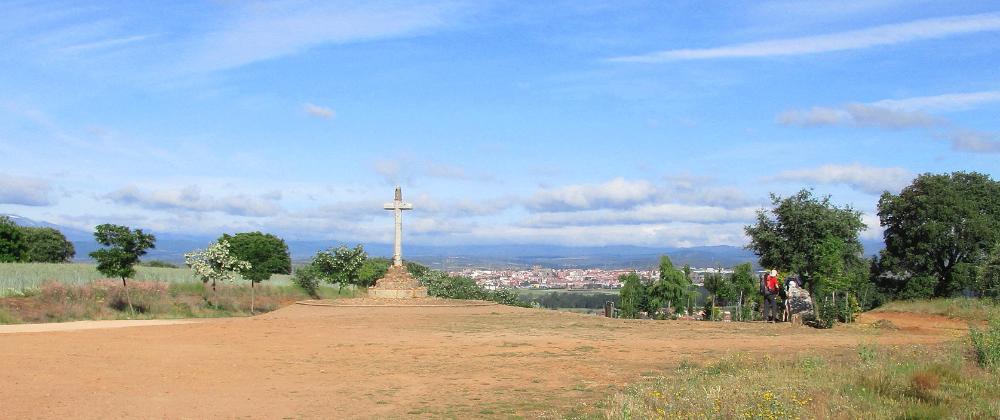
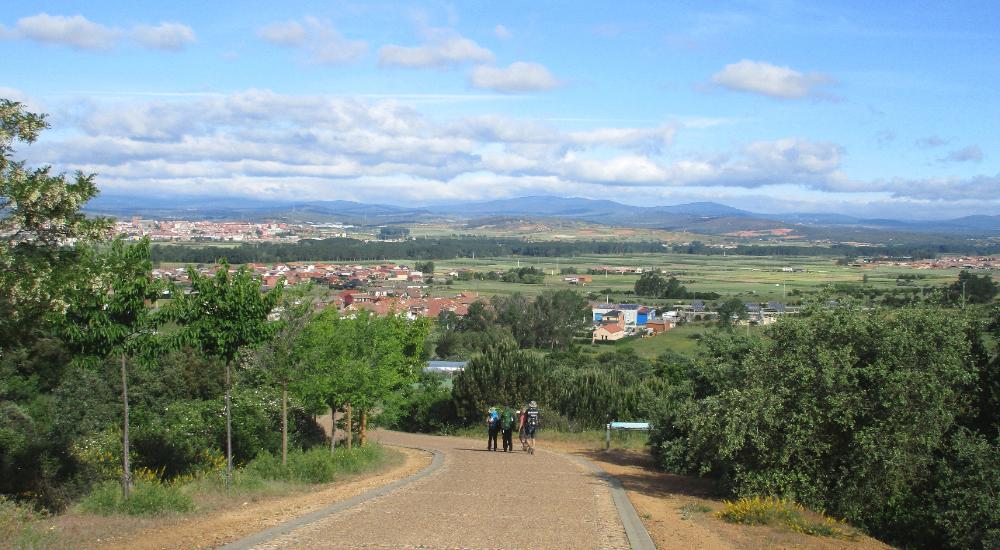
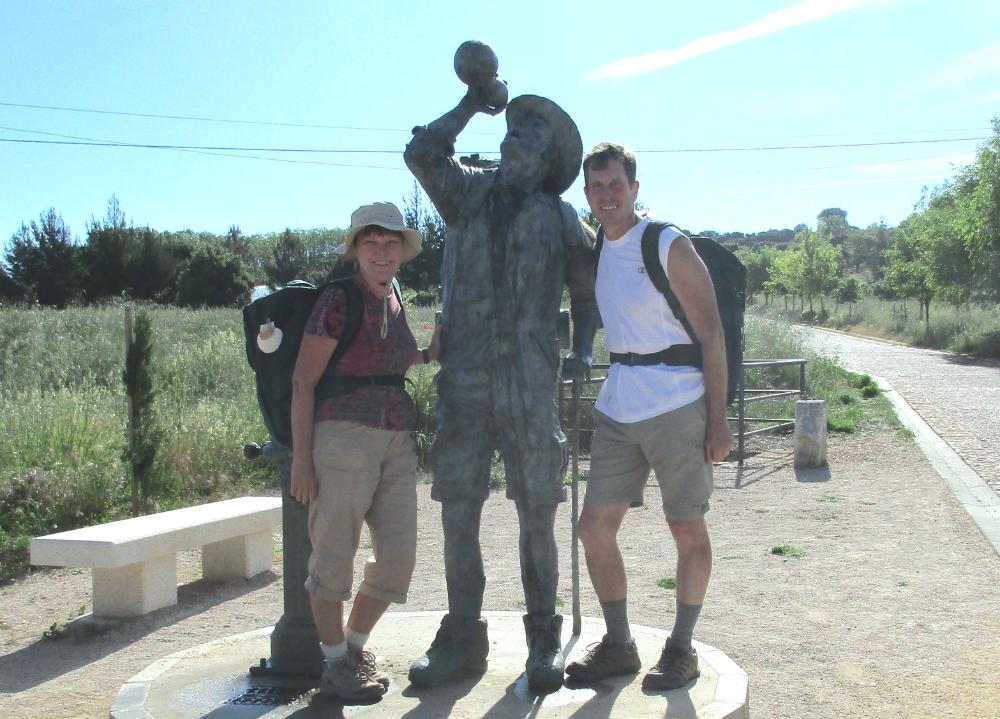
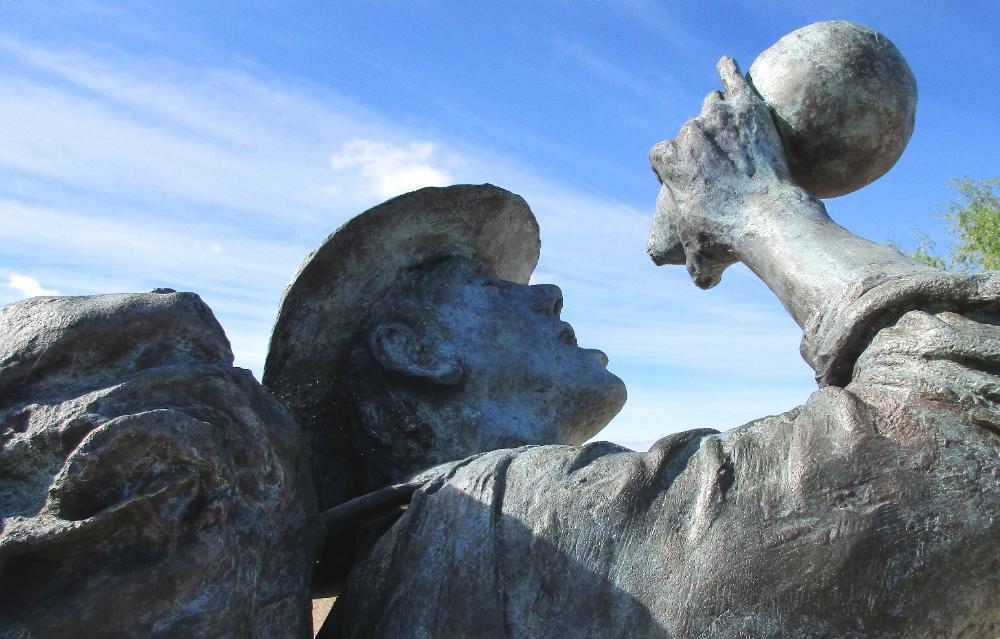
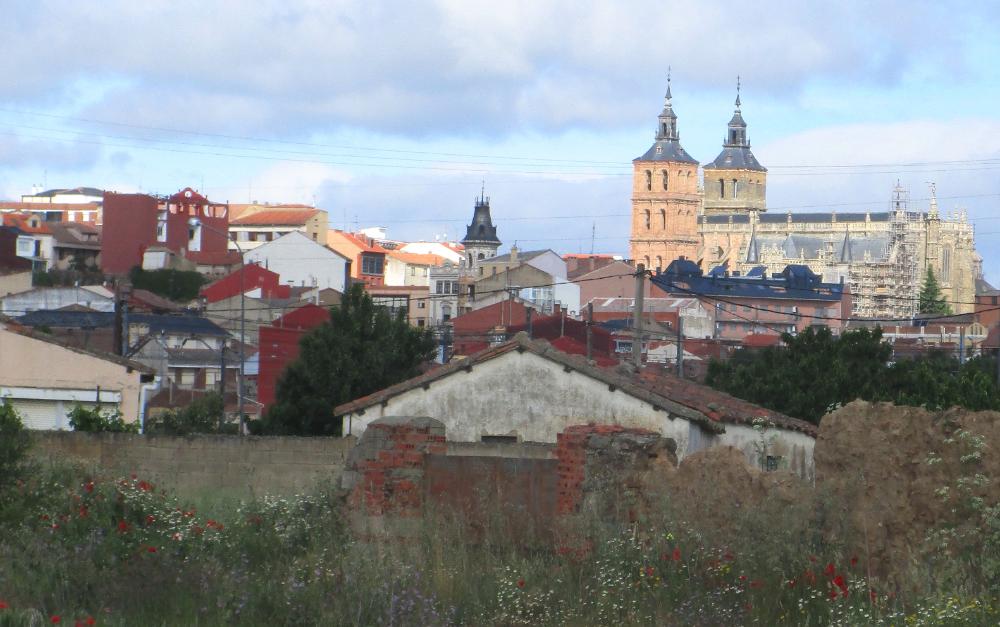
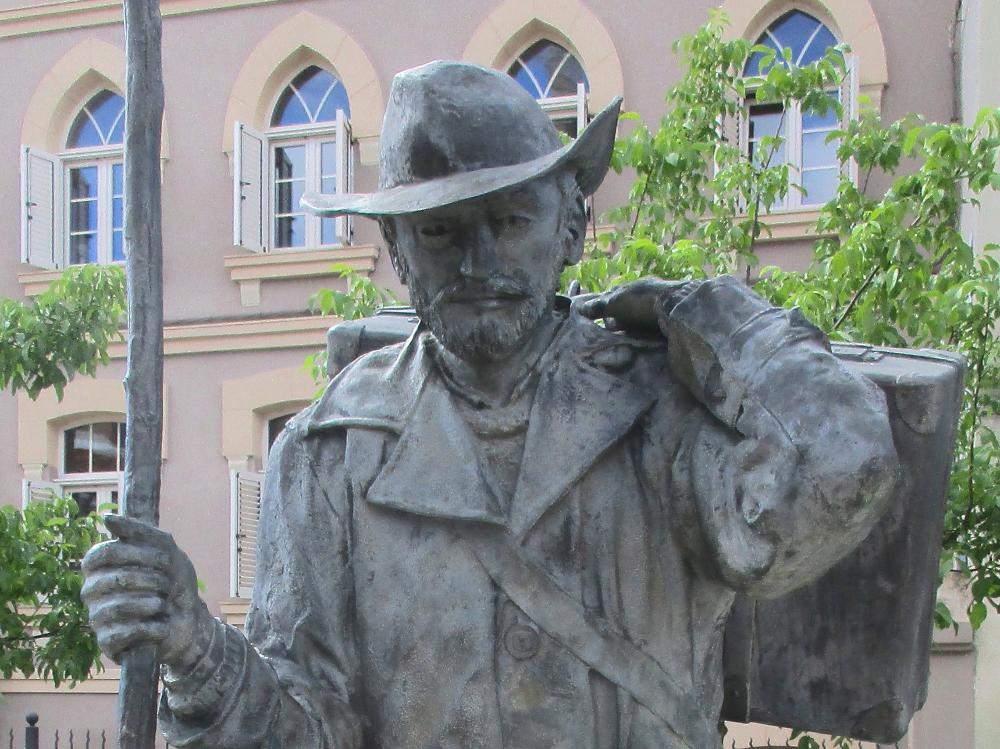
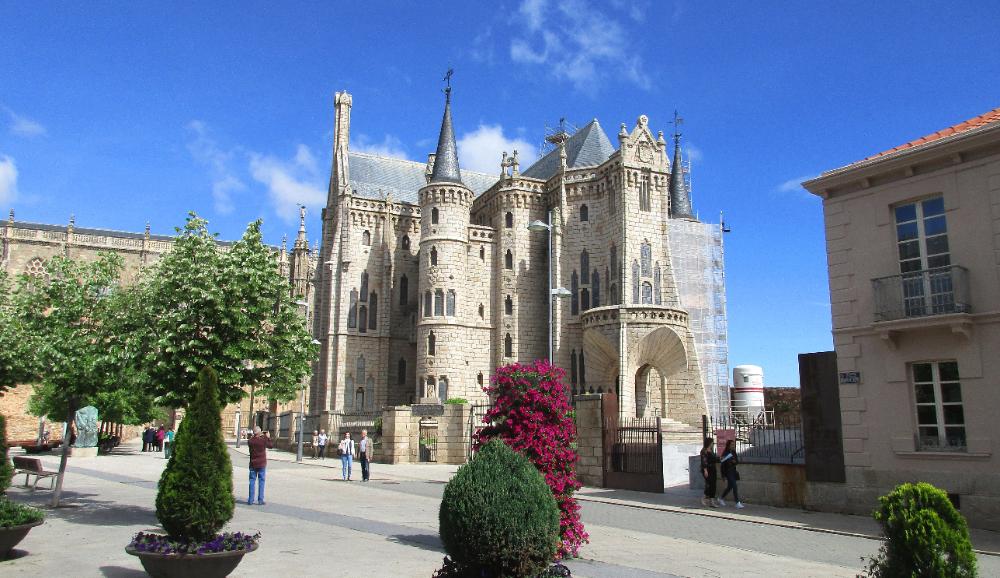
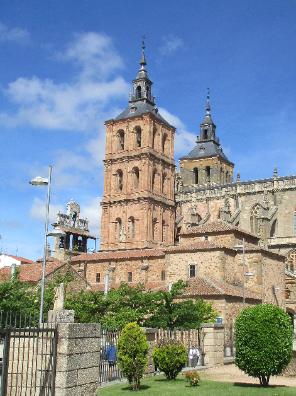
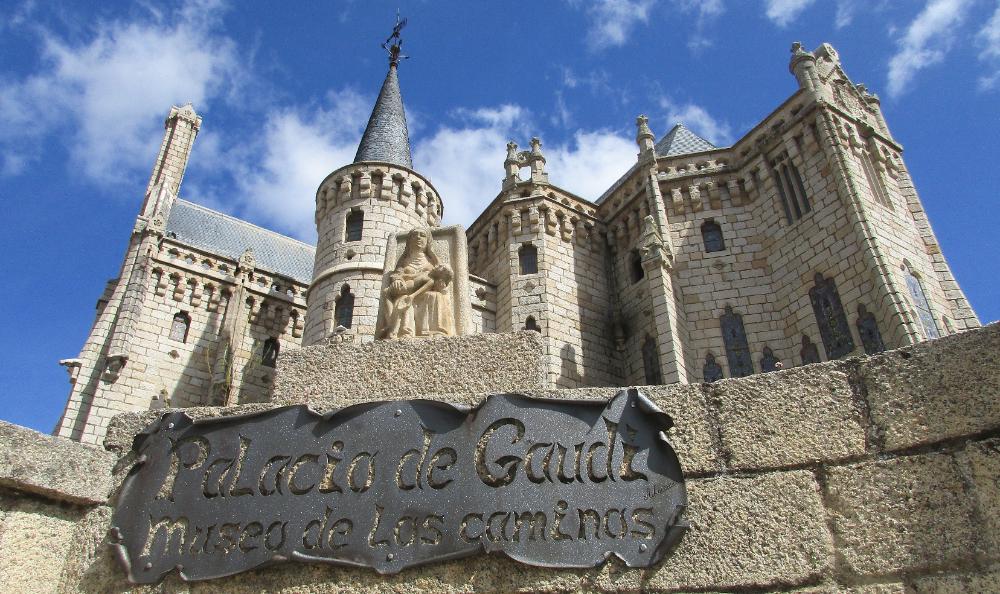
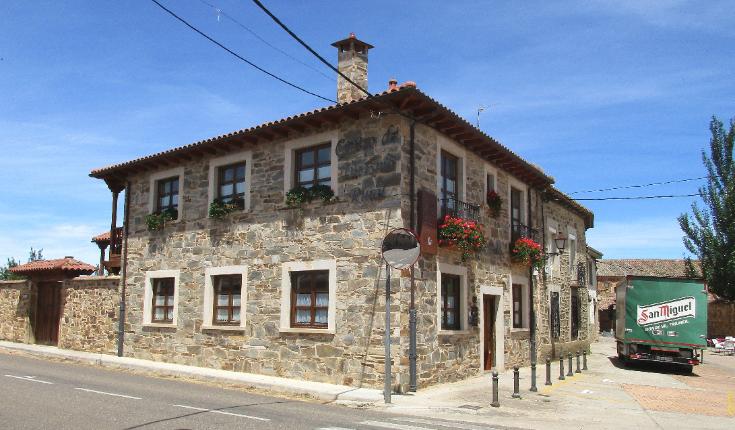
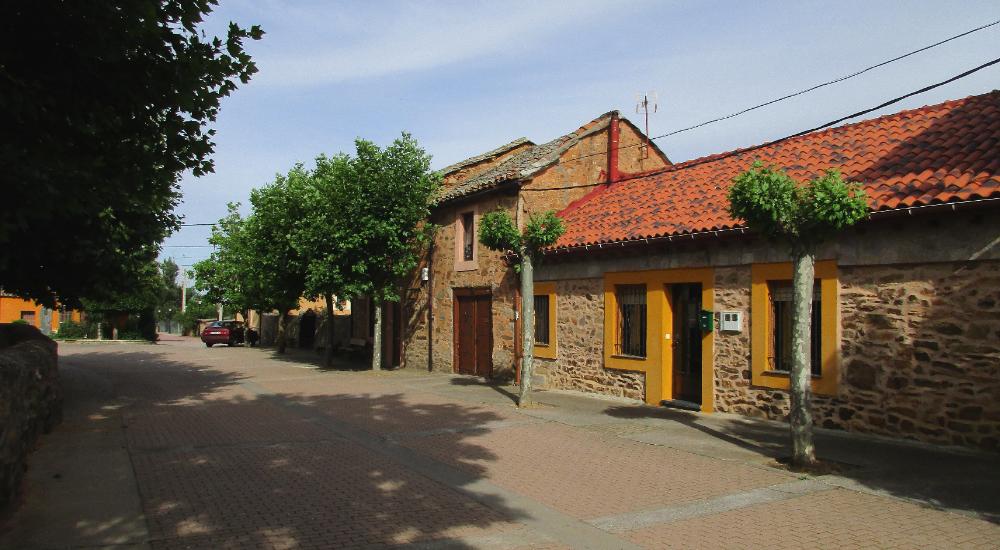
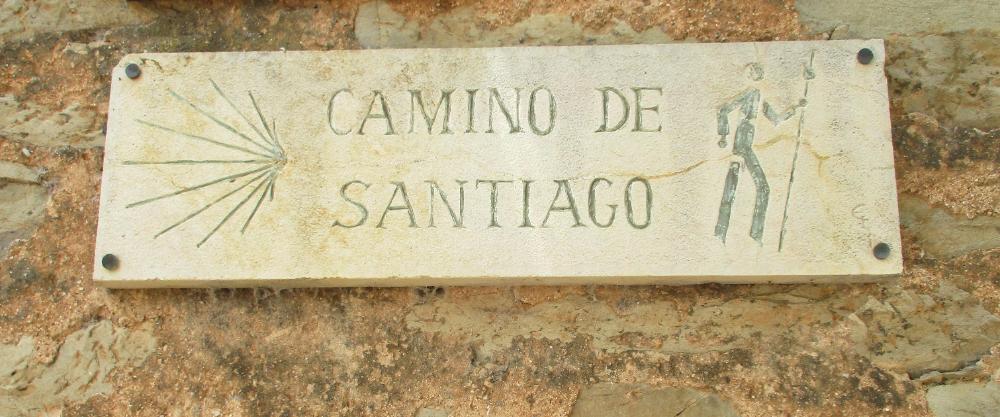
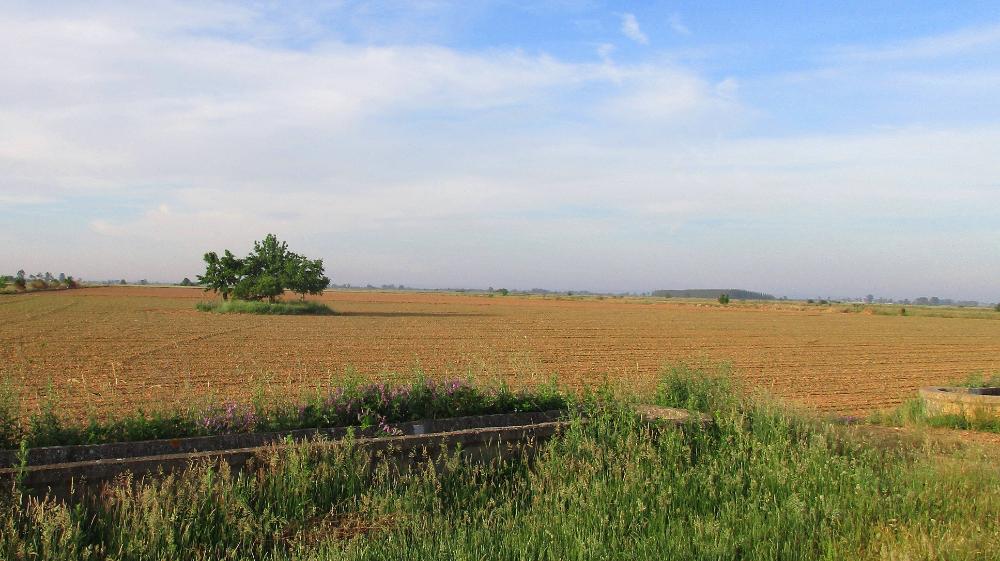
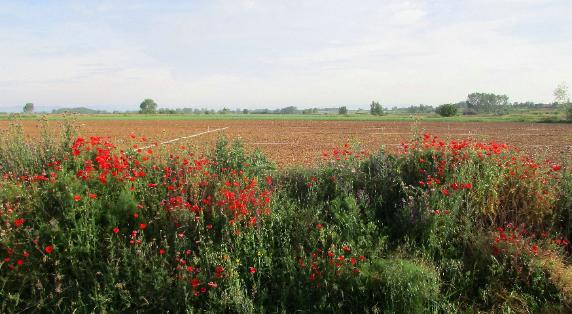
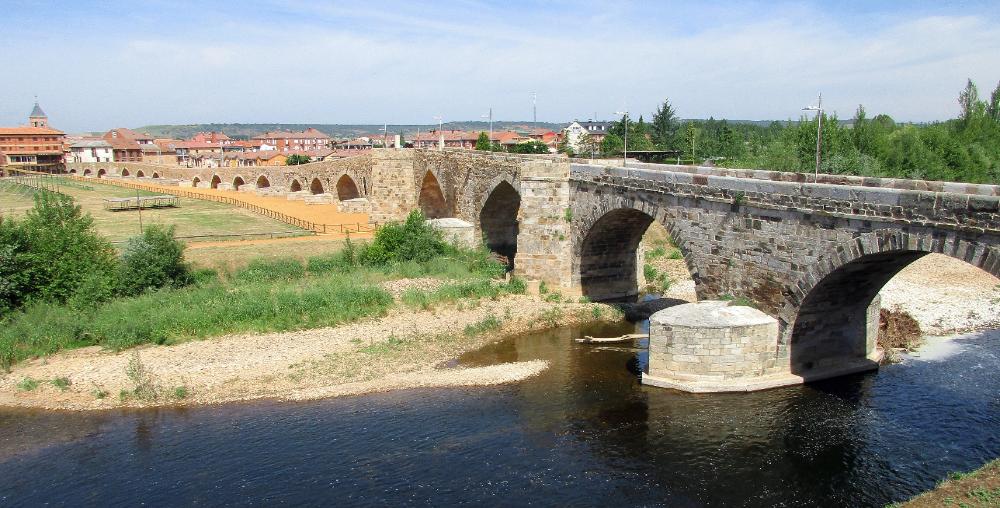
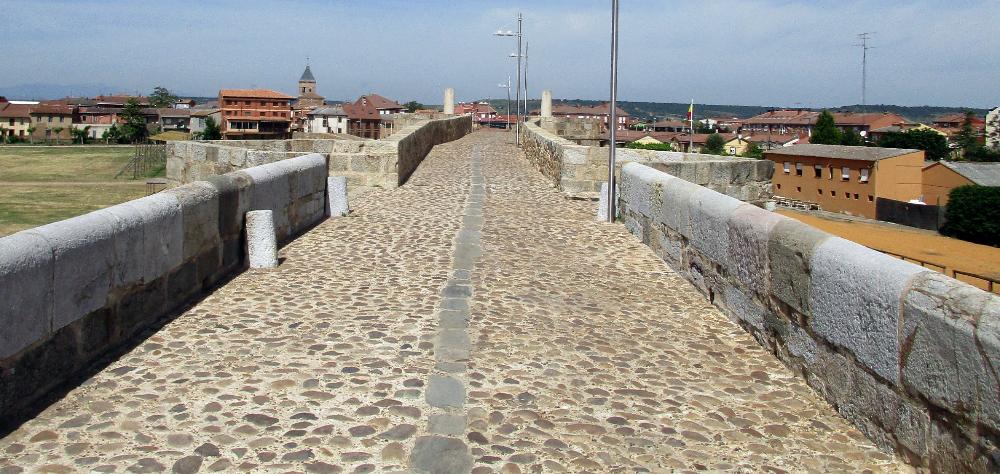
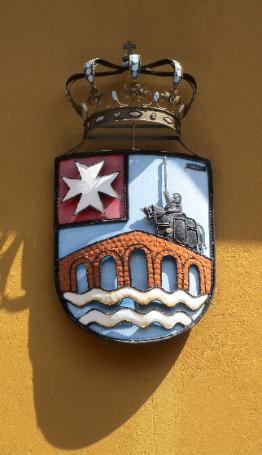
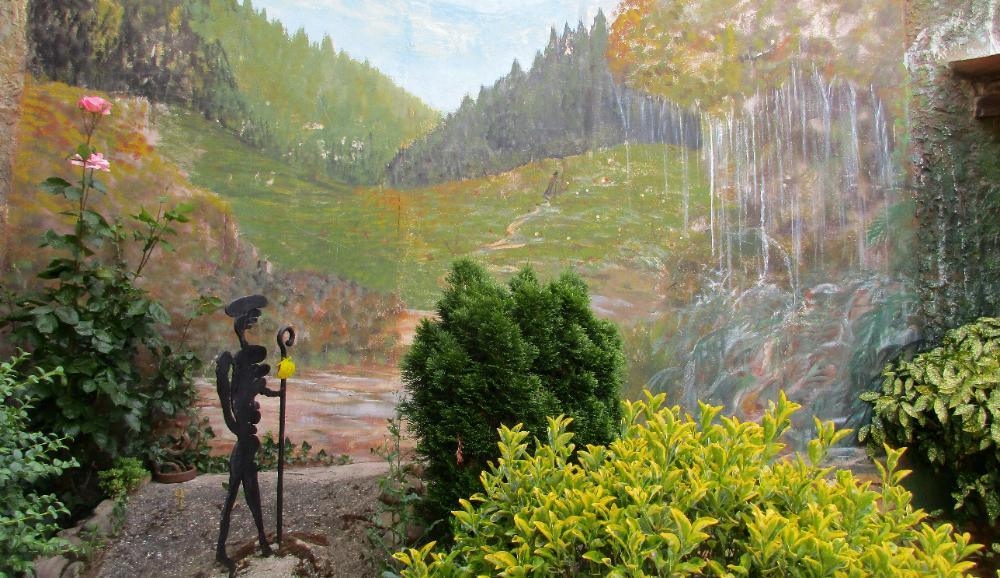
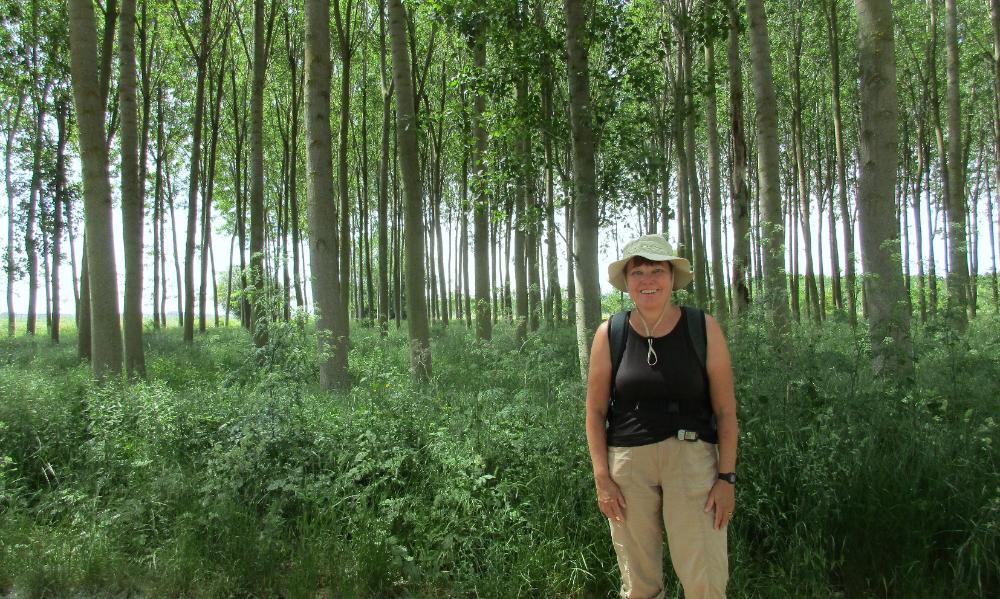
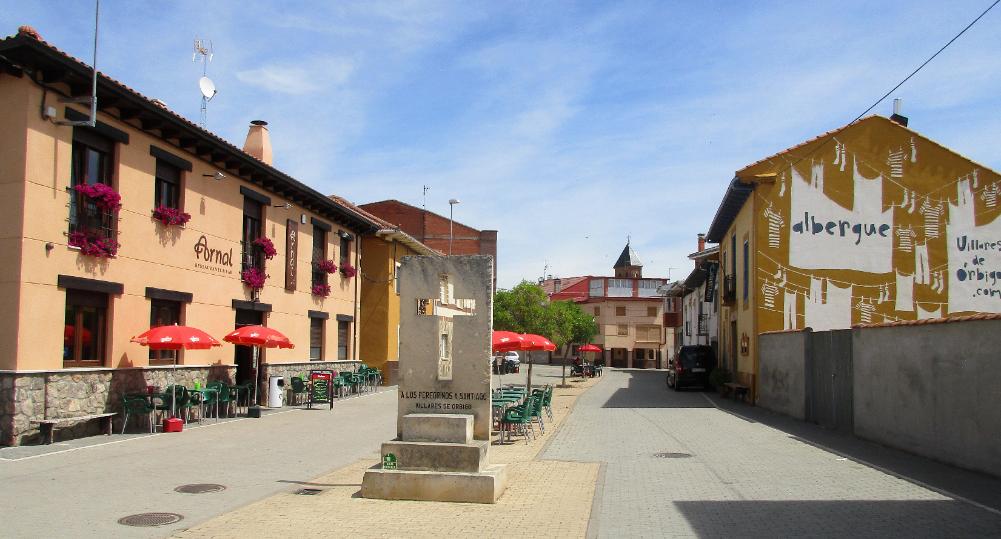
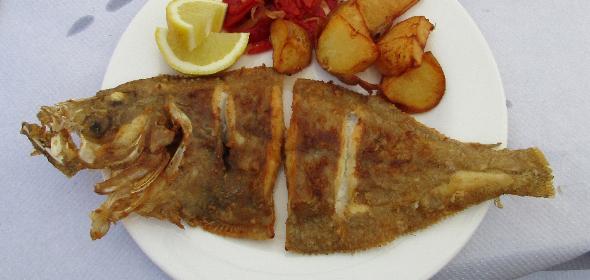
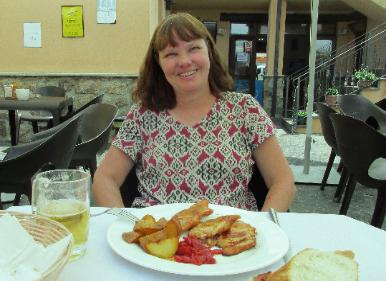
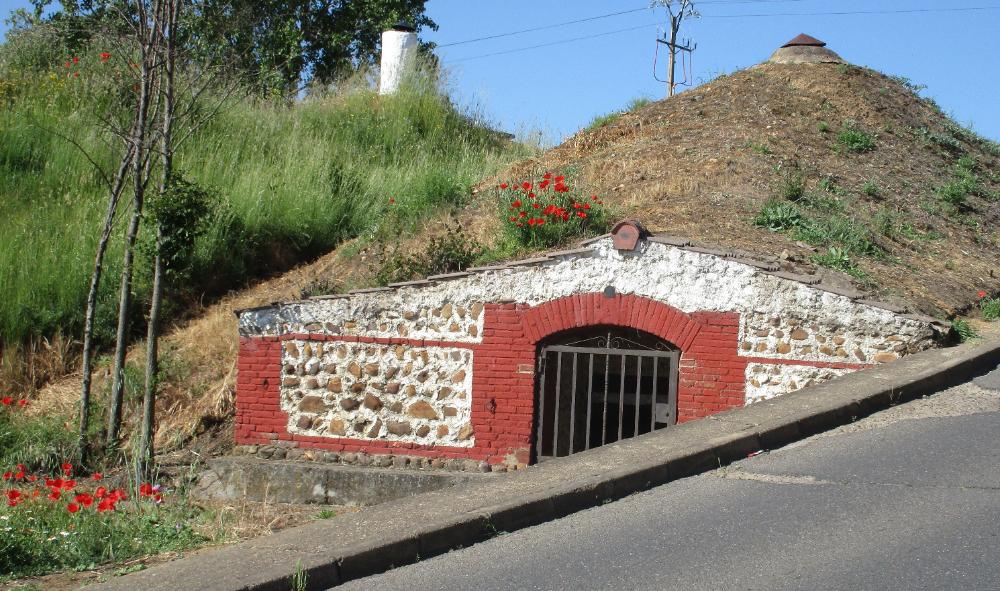
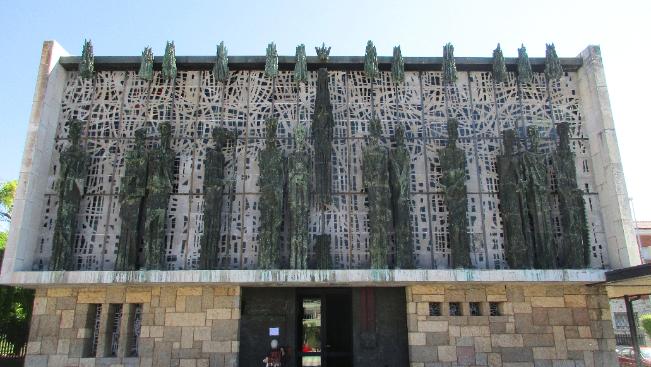
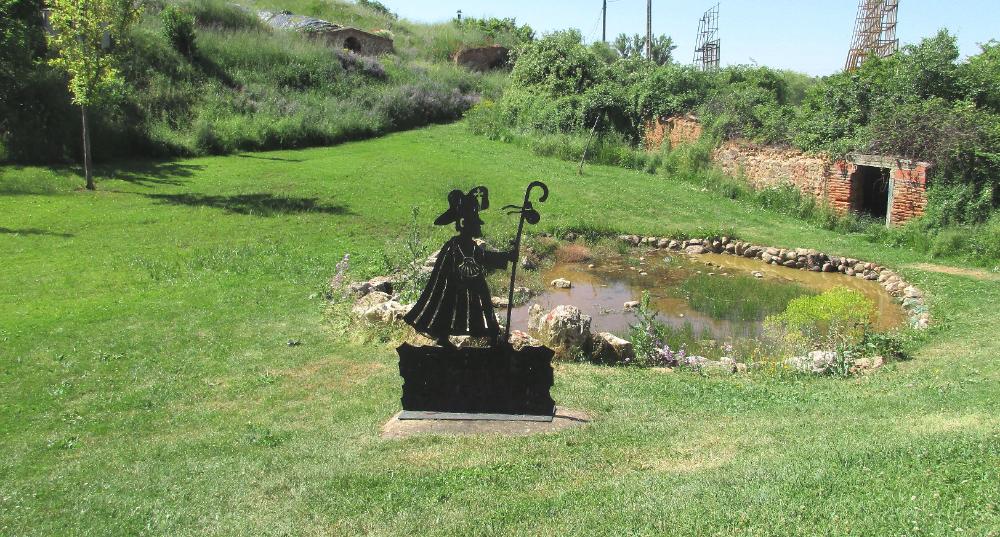
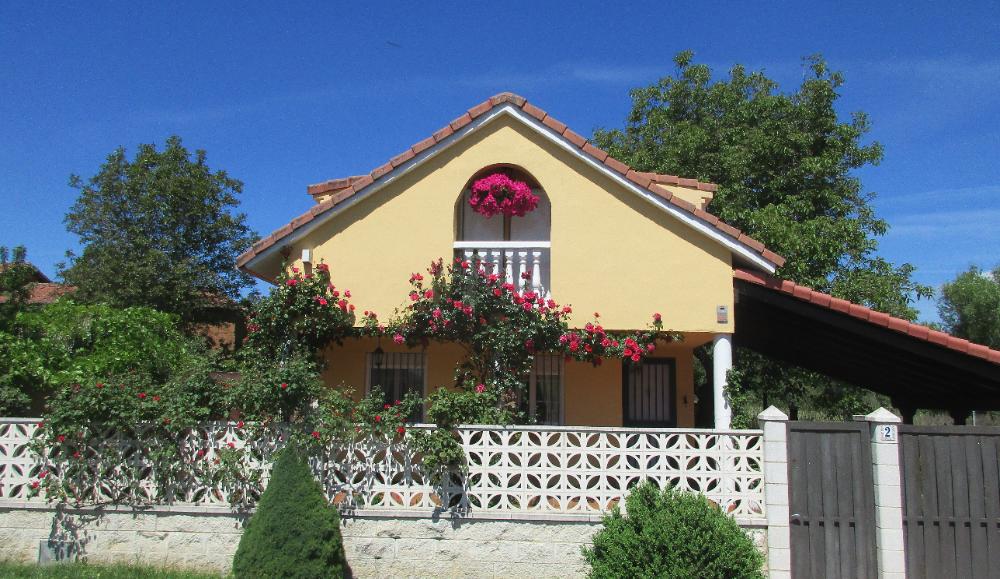

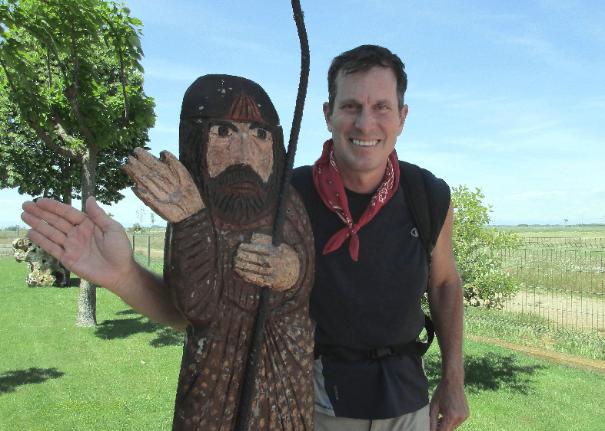
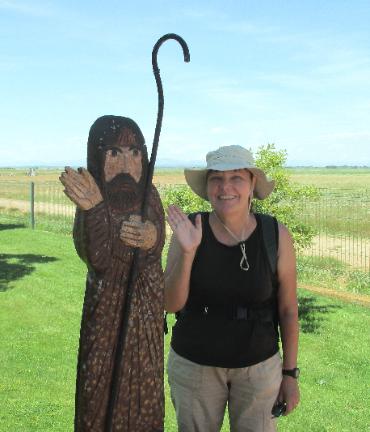
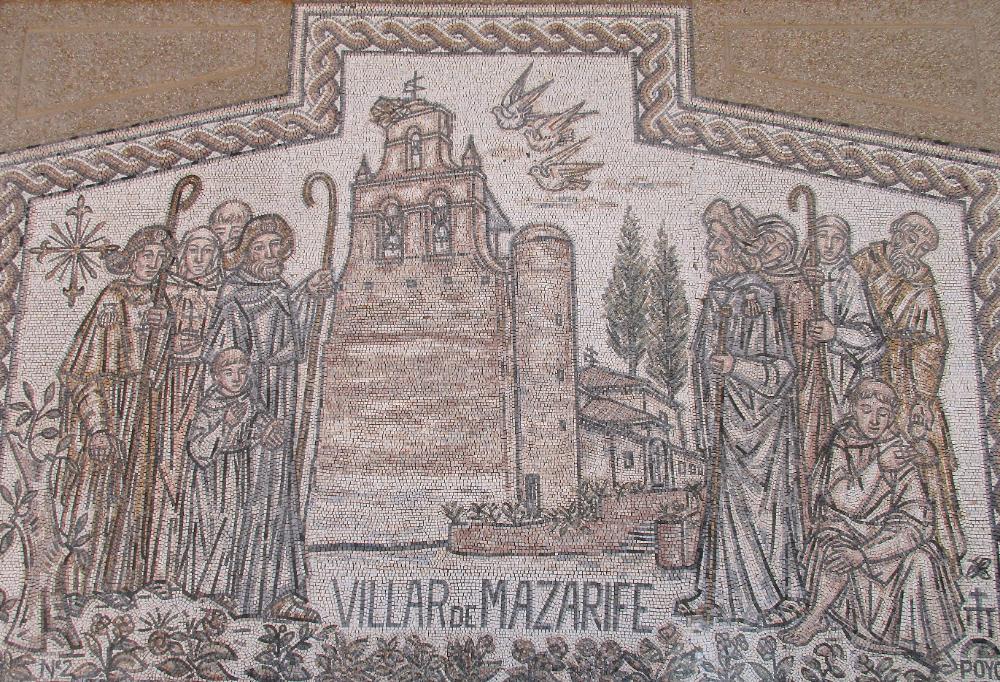
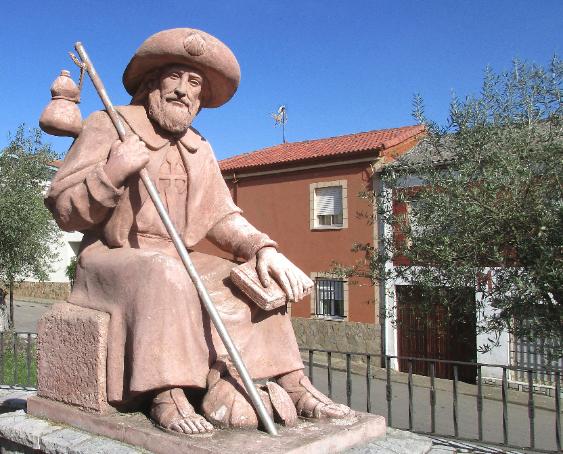
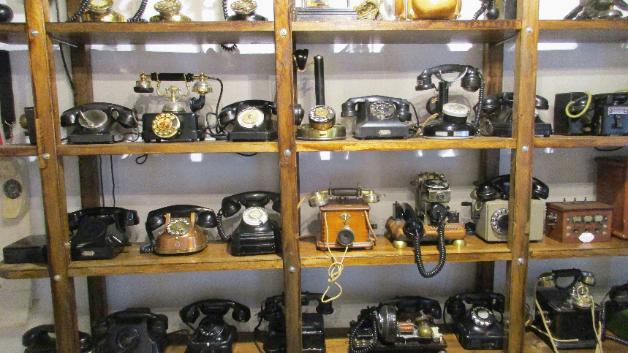
| The Meseta Ends: León to Astorga |
| Leaving León behind, we found the open road again -- the true soul of the Camino |
| During this stretch we hiked three days from León to just past Astorga, with distances as follows: 13½ miles to Villar de Mazarife, 10½ miles to Villares de Orbigo, and 12 miles to Murias de Rechivaldo |
| Hiking Day 27: León to Villar de Mazarife |
| We've been hiking for one month now, and we still have about two weeks to go to Santiago (not to mention Finisterre) |
| We hiked 8 miles to Astorga plus 4 miles to Murias de Rechivaldo. The terrain was mostly flat and easy, but that’s about to change since this is the last of the Meseta. |
| After 8 miles we reached this hillside with a cross atop it and looked down on the city of Astorga |
| Heading down, we passed an itinerant guitarist who sang a “Peregrina” song to all the passing ladies, changing the lyrics to suit the nationality (“Americana” for Robin) |
| At the base of the hill is a memorable statue of a pilgrim drinking the last of his water |
| One nice feature of the Camino is the regular water stations along the way that make it possible to refill your water bottles as you go. Half hidden behind Robin is one such station. |
| On the outskirts of Astorga we could see the cathedral in the distance -- each tower its own distinct color |
| Astorga is also home to a second pilgrim statue. For some reason this one reminds me of Vincent Van Gogh so I've unofficially titled it "Van Gogh on the Camino." |
| Gaudi's confection of a building is now a Camino museum housing religious art. It's one of only three buildings by Gaudi outside Catalonia. |
| We continued for 3 more miles to Murias de Rechivaldo, a pretty Maragato village with many traditional stone buildings. Maragato refers to a group of about 40 villages around Astorga whose inhabitants are said to be descended from Berbers. |
| Have we mentioned lately how much we're enjoying the Camino?! |
| We stayed at La Veleta (€53 with private bath and full breakfast). The amiable owner showed us to a lovely upstairs room with balcony, did our laundry for us (!), and cooked us a delicious dinner for €10 each. |
| We got off to a reasonably good start by our standards at 7:30 am so we could get most of the hiking done early while it was cool |
| Birds chirped and frogs croaked from agricultural canals, and tractors actively plowed fields and sprayed plants |
| Eventually we reached Hospital de Orbigo with its famous bridge (by Camino standards anyway) |
| The bridge is the site of "El Paso Honroso," a 1434 jousting competition wherein one knight, Don Suero Quinoñes, and his nine comrades in arms challenged and defeated 68 men and broke nearly 200 lances -- all in an effort to free Don Suero from the torment of unrequited love |
| A pillar inscribes the names of Don Suero and his nine comrades, and plaques commemorate the heroic event. The story is even mentioned in "Don Quijote." |
| We liked this unusual diorama of a pilgrim hiking the Camino, displayed in one of the albergues |
| This peaceful forest provided some much-needed shade on a hot afternoon as we finished our hike to Villares de Orbigo |
| We stayed at the Villares de Orbigo Albergue (€30 with private bath) and had lunch across the street at the excellent Restaurant Bar Arnal |
| For €10 each had mixed salad, melon with ham, pork with red peppers, fresh white fish, and ice cream. The waitress even wrote up a list of the types of foods we should try in Galicia. |
| It took nearly 5 miles of city and suburb walking before we reached the countryside again. Along the way, we took a fancy to these underground bodegas that look almost like urban hobbit holes. |
| Still in the Leon suburbs, we arrived at La Virgen del Camino, a modern church with a strikingly tall cross and twelve elongated apostles sculpted on the outside |
| Just past Virgen del Camino and this mini-pilgrim, we began following the alternate route proposed by our guidebook. This was a good decision as, after passing over and under two highways, things got much quieter. |
| We passed flower-bedecked houses on the way to the open countryside (shown in the top photo) |
| At the entry to town is a lovely mosaic -- right next to the waving pilgrim if you look closely |
| We paused for lunch in tiny Chozas de Abajo, then pushed on for the final hour to Villar de Mazarife, where we were greeted by this stern-looking pilgrim. Don't be put off by his demeanor, he's quite friendly once you get to know him. |
| This is the mosaic up close, showing medieval pilgrims arriving in town |
| The church shown in the mosaic -- complete with stork nests -- is the town church shown here |
| Inside is a charmingly rudimentary Jesus on the cross |
| There's also the most eclectic museum you could ever hope for, run by an old man who used to work for the telephone company. The collection is charmingly eccentric. |

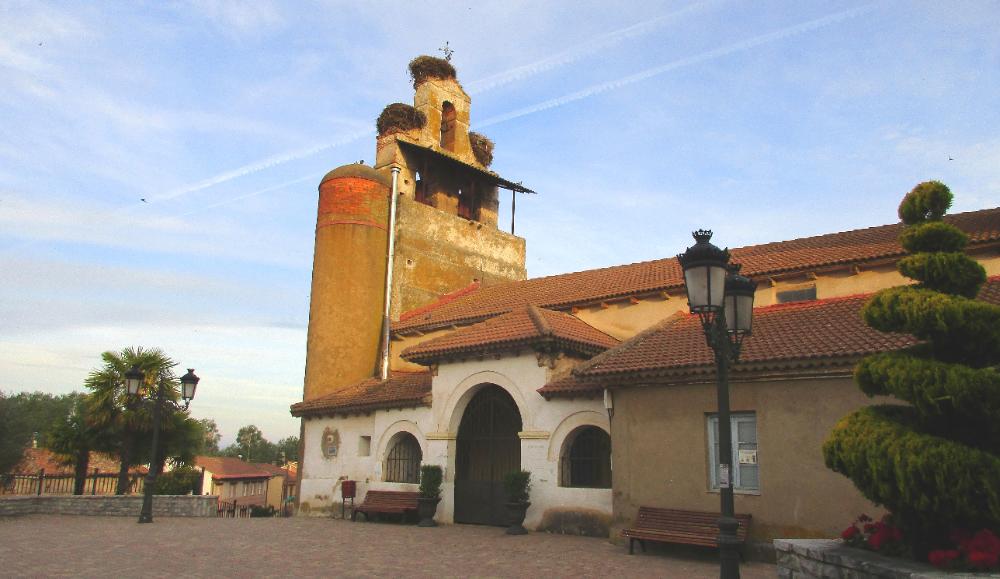
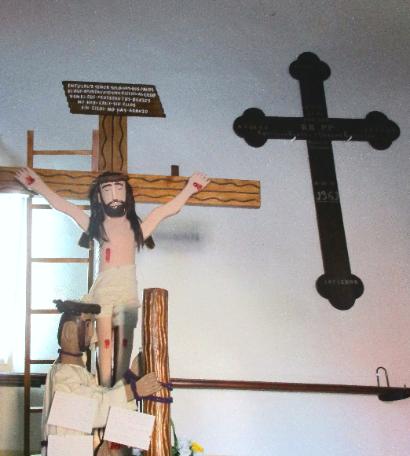
| Hiking Day 28: Mazarife to Villares de Orbigo |
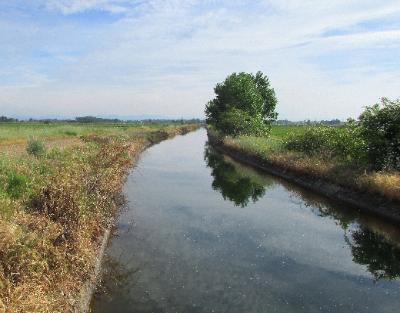
| Hiking Day 29: Orbigo to Murias de Rechivaldo |
It took us 12 hiking days to cross the Meseta,
which represents more than a quarter of our
Camino. Overall we enjoyed the serenity of this
extended stretch: it gave us time to think about
why we were here and what we were doing and
what it means to be a modern pilgrim. After all,
medieval pilgrims walked because they had to:
their choice was pretty much limited to on foot
or horseback. But we -- we could drive a rough
approximation of the Camino in one long day if
our goal was simply to reach our destination.
So why don't we? What is it that compels us and
so many others to take the long way as it were?
We think the answer, in part, is that we want to
deliberately fall out of step with the rest of the
world for a time. We want to go slower with
intention. Walking between villages simply
feels different than driving between villages,
with more room for connection along the way --
human to human, human to nature, human to
divinity. If it's really the journey that matters
more than the destination, then the Camino
offers some 500 miles of potential fulfillment.
which represents more than a quarter of our
Camino. Overall we enjoyed the serenity of this
extended stretch: it gave us time to think about
why we were here and what we were doing and
what it means to be a modern pilgrim. After all,
medieval pilgrims walked because they had to:
their choice was pretty much limited to on foot
or horseback. But we -- we could drive a rough
approximation of the Camino in one long day if
our goal was simply to reach our destination.
So why don't we? What is it that compels us and
so many others to take the long way as it were?
We think the answer, in part, is that we want to
deliberately fall out of step with the rest of the
world for a time. We want to go slower with
intention. Walking between villages simply
feels different than driving between villages,
with more room for connection along the way --
human to human, human to nature, human to
divinity. If it's really the journey that matters
more than the destination, then the Camino
offers some 500 miles of potential fulfillment.
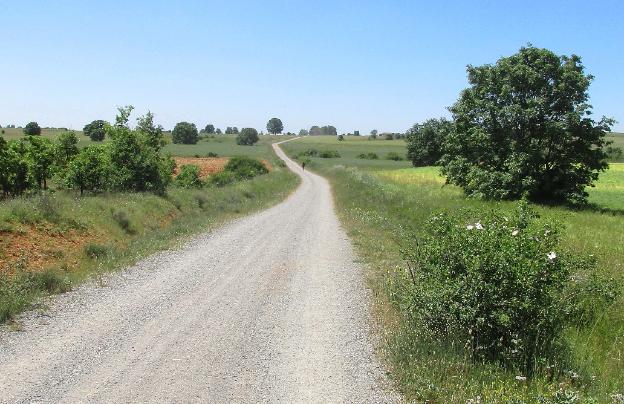
| A special treat in Astorga is seeing this whimsical Gaudi castle known as the Episcopal Palace |
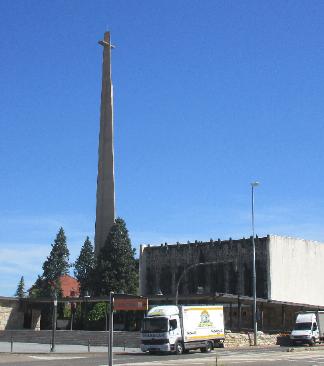
| And on the main square near the church is this terrific pilgrim statue |
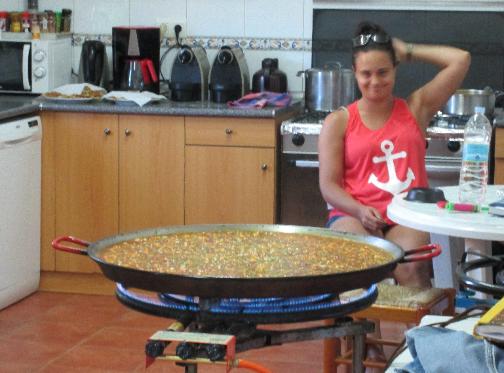
| We stayed at Albergue San Antonio de Padua (€30 for private room with shared bath). The pilgrim dinner, especially the veggie paella, was excellent. Come morning, the occupants of the huge dorm above us cleared out before our alarm even went off at 6:30 am. Of course they're usually racing towards their next municipal albergue without a reservation -- a real motivator. We've been calling a day or two in advance so can afford to be a little more leisurely. |
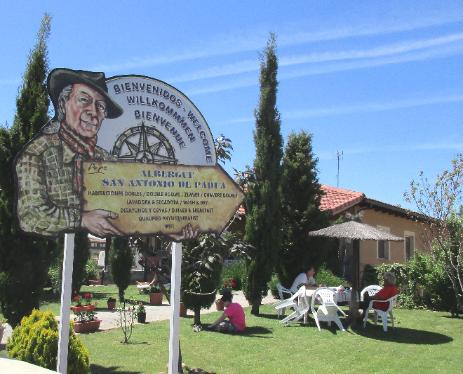
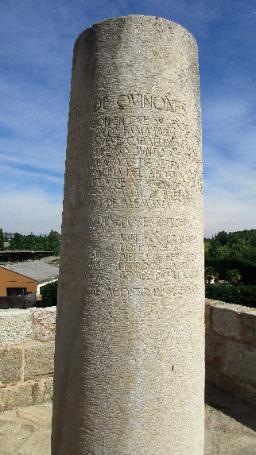
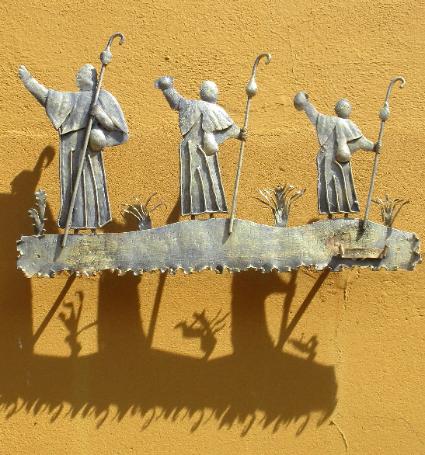
| Astorga Cathedral was built over the course of centuries so it's a mix of Gothic, Neoclassic, Baroque, and Renaissance styles |
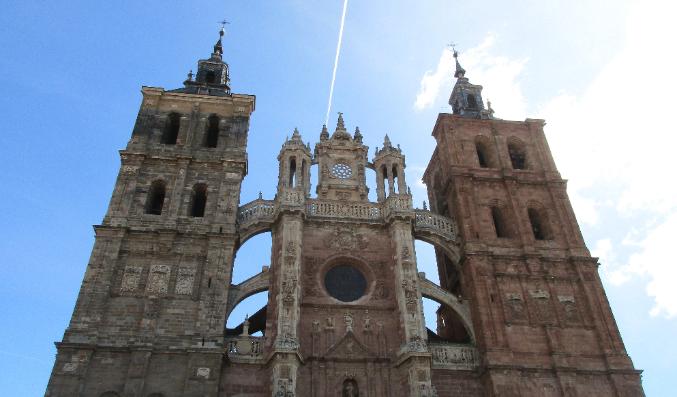
| The church in Murias de Rechivaldo has an unusual outside staircase leading up to the bell tower |
